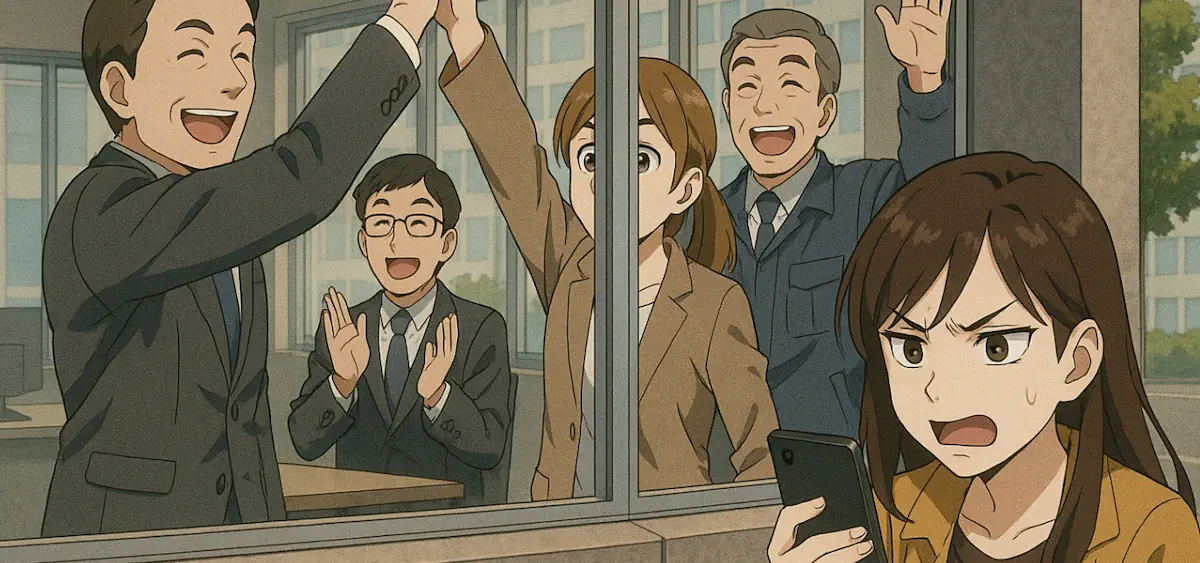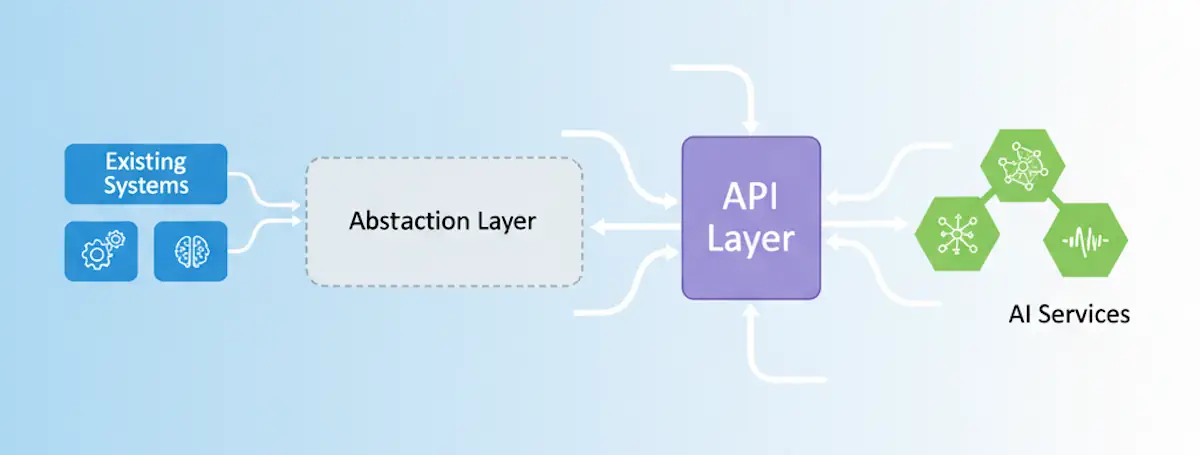Trapped Between Meetings and Midnight
Why your most productive hours matter and how to reclaim them when your calendar is controlled by others.

I’m unstoppable after 9 PM.
As an individual contributor and later as a leader—especially during my startup years—I could tackle complex problems, write clean code, and make strategic decisions with a clarity that eluded me at 8 AM meetings.
In startups, I set my own hours (within reason). My most productive time aligned perfectly with my offshore team in India and Eastern Europe, and I was happy to have 9 PM one-on-ones rather than force talented engineers to be online at 1 AM their time after a long day.
But Corporate America? That’s a different beast entirely. Now, as a director in a traditional corporation, my days are filled with back-to-back meetings from 8 AM to 5 PM. And frankly? I feel less productive now than I did at any other point in my career.
If this resonates, you’re not alone—and you’re not broken. Research increasingly shows that working against your natural chronotype, your biological preference for when you’re most alert and productive, can significantly impact performance and well-being.
The science is clear: your power hours matter. But what do you do when your calendar is no longer yours to control?
The Science of Social Jetlag
The term “social jetlag,” coined by chronobiology researchers, describes the misalignment between your biological clock and social obligations like work schedules. And the numbers are sobering: research estimates that two-thirds of the working population suffers from some degree of social jetlag, with 80% of employees working schedules not aligned with their natural clocks.
For night owls in leadership positions, this creates a particularly cruel irony. You’ve reached a level where your decisions matter most, but you’re making them when your cognitive function is at its lowest.
Research shows that late chronotypes (night owls) reach peak aerobic and cognitive performance around 8 PM—11 hours after the stereotypical wake time—while early types peak around noon, just 5-6 hours after waking. When you’re forced into morning-heavy schedules, social jetlag wreaks havoc on the prefrontal cortex, impairing focus, emotional regulation, and creative problem-solving–precisely the skills you need for senior leadership.
Peak Performance by Chronotype
Peak: 12:00 PM
5-6 hours after stereotypical waking
Peak: 8:00 PM
11 hours after stereotypical waking
Peak: 2:00-4:00 PM
Variable timing
Source: Research on chronotype performance patterns from University of Liege and circadian rhythm studies
Why Leadership Makes It Worse
The cruel progression is predictable. As an IC, you could block focus time when it worked for you. In startups, you had even more control—I regularly scheduled my deep work for 9 PM to midnight, perfectly aligned with my peak hours and my offshore teams. But as you move into senior leadership in Corporate America, three forces conspire against your natural rhythm:
Meeting proliferation: Post-pandemic research shows that managers are working longer hours with more meetings than ever. Your calendar becomes a shared resource, optimized for others’ availability rather than your effectiveness.
Early-bird bias: The modern workplace is built around morning people, with early meetings seen as a sign of commitment and late-day productivity viewed with suspicion. Research shows that supervisors perceive night owl employees as “lazy or unconscientious,” even when requesting reasonable schedule accommodations.
Stakeholder synchronization: Board meetings, investor calls, and cross-timezone collaboration all favor conventional business hours. Your ability to optimize for your biology shrinks as your responsibility for others’ schedules grows.
The Real Impact on Decision Quality
This isn’t just about feeling groggy in morning meetings. Research on Japanese office workers found that working against your chronotype directly correlates with increased presenteeism—being physically present but cognitively compromised. For night owls forced into early schedules, cognitive performance can drop significantly, with recent studies showing faster cognitive decline over time.
Consider what this means for your leadership effectiveness:
Strategic thinking suffers: Your ability to see patterns, connect ideas, and think systems-level deteriorates when you’re cognitively fatigued.
Emotional regulation declines: Sleep misalignment impairs the prefrontal cortex’s ability to manage emotional responses, making difficult conversations and conflict resolution harder.
Decision fatigue compounds: When you’re already operating below peak capacity, your limited decision-making energy depletes faster throughout the day.
I’ve seen this firsthand. The strategic insights that come naturally at 10 PM feel impossible to access during a 9 AM leadership team meeting. Complex technical architectures that I can visualize clearly after dinner become muddled concept charts in morning presentations.
Strategies for the Calendar-Constrained Leader
While you can’t completely redesign your workday around your chronotype, you can make strategic adjustments that honor your biology within the constraints of senior leadership:
Protect Your Peak Hours (Even If They’re After Hours)
Block evening deep work: Research supports reserving 1-2 hours in the evening for complex thinking tasks, taking advantage of night owl peak productivity between 7-9 PM. Yes, this means working from home after dinner, but you’ll accomplish more in those two focused hours than in six hours of morning meetings.
Leverage global teams strategically: If you work with offshore teams, embrace the natural alignment. Those 9 PM calls with your India or Eastern Europe teams aren’t a burden—they’re when you’re both operating at peak capacity. I’d rather have an engaged one-on-one at 9 PM than force a talented engineer to stay online until 1 AM their time for my convenience.
Set boundaries on post-hours availability: Make it clear that 7-9 PM is your deep work time. You’re not available for domestic calls, but you’re producing your highest-value thinking—and potentially collaborating with global team members who appreciate the accommodation.
Time-shift your planning: Use your peak hours for strategic planning, complex analysis, and creative problem-solving. Save the morning meetings for information gathering and team updates.
Optimize Your Constrained Schedule
Front-load the routine: Prepare everything the night before—clothes, breakfast, briefcase, even reviewing your meeting agenda. This can save you an hour of morning decision-making when you’re cognitively sluggish.
Schedule strategically: Use mornings for easier tasks—clearing email, routine administrative work, and information-sharing meetings. Save afternoon slots for decisions that require deeper thinking.
Leverage your “second wind”: Many night owls experience a productivity surge in late afternoon around 4-5 PM. Block this time for important decisions or complex problems.
Work the System
Propose alternative meeting times: When scheduling with peers, suggest 10 AM instead of 8 AM starts. Many people default to early meetings without strong preferences.
Batch your meetings: Since evening chronotypes perform better with later wake times, try to negotiate a 10-6 schedule instead of 8-5, clustering meetings in the middle of your day.
Lead by example on meeting hygiene: Question whether every meeting needs to happen, and advocate for asynchronous work where possible. Your team’s varied chronotypes will thank you.
When to Push for Bigger Changes
The business case for chronotype accommodation is strong, especially for senior leaders where decision quality has exponential impact:
Your decisions are expensive: A poor strategic decision made during cognitive fog can cost orders of magnitude more than the inconvenience of unconventional hours.
Model inclusive leadership: By acknowledging chronotype differences, you create space for your team members to optimize their own productivity.
Leverage hybrid work: Post-pandemic flexibility has made chronotype accommodation more acceptable, with 69% of US companies now offering location flexibility. Use this window to establish patterns that work.
The Honesty Factor
Here’s what I’ve learned: be candid with your own leaders about your peak performance times. While this doesn’t work in every corporate culture, we’re moving toward a world where outcomes matter more than showing up with a smile for a 7:30 AM meeting. I will never show up with a smile to an early meeting—I’ll be there, cradling my coffee cup and hoping for the best. But schedule that same conversation for 4 PM, and you’ll get strategic thinking that moves the business forward.
This connects directly to building psychological safety in your organization. When leaders model vulnerability about their own constraints and peak performance times, it creates permission for others to be honest about theirs. The key is framing it around business impact, not personal preference. “I do my best strategic work after 3 PM, so I’d like to schedule our quarterly planning sessions then” lands differently than “I’m not a morning person.”
“Time of day explains 20% of the variance between who is performing well and who is not. Understanding this hidden pattern allows you to do the right work at the right time.”
— Daniel Pink, author of “When: The Scientific Secrets of Perfect Timing”
The Great Corporate Exodus
Chronotype misalignment is associated with increased health risks, reduced cognitive performance, and lower job satisfaction. For senior leaders making high-stakes decisions, operating against your natural rhythm isn’t just personally draining—it’s organizationally expensive.
This rigidity may be driving key talent away from corporate environments entirely. Recent data shows that 79% of workers want to leave corporate jobs to start their own business, with younger generations particularly motivated by work flexibility and autonomy. A record 5.5 million new business applications were filed in 2023, and women-owned firms increased by 45% between 2007 and 2016—five times the national average.
The top motivations? Work flexibility, meaningful purpose, and increased earning potential. When 13% of Gen Z and 11% of millennials plan to leave their current jobs within the next 12 months to pursue self-employment, it’s worth asking: how much talent are we losing to inflexible chronotype policies? I wonder how many of those are s and figuratively tired of their work schedule.
The Corporate Exodus: Why Talent Leaves
- 🕒 Work flexibility and schedule control
- 🎯 Meaningful purpose and autonomy
- 💰 Increased earning potential
Like the trust paradox we see with return-to-office mandates, rigid schedule policies may signal deeper leadership challenges. When we can’t trust employees to work effectively during their peak hours, we’re essentially admitting we lack the systems and culture to manage for outcomes rather than activity.
Only about 15% of the population are true morning larks, while 25% are genuine night owls, with the majority falling somewhere in between.
If you’re a night owl who’s risen to senior leadership, you’ve succeeded despite, not because of, your schedule. Imagine what becomes possible when you stop fighting your biology and start leveraging it.
What’s one meeting you could move from 8 AM to 10 AM this week? And what complex decision are you putting off that might benefit from your evening clarity?








